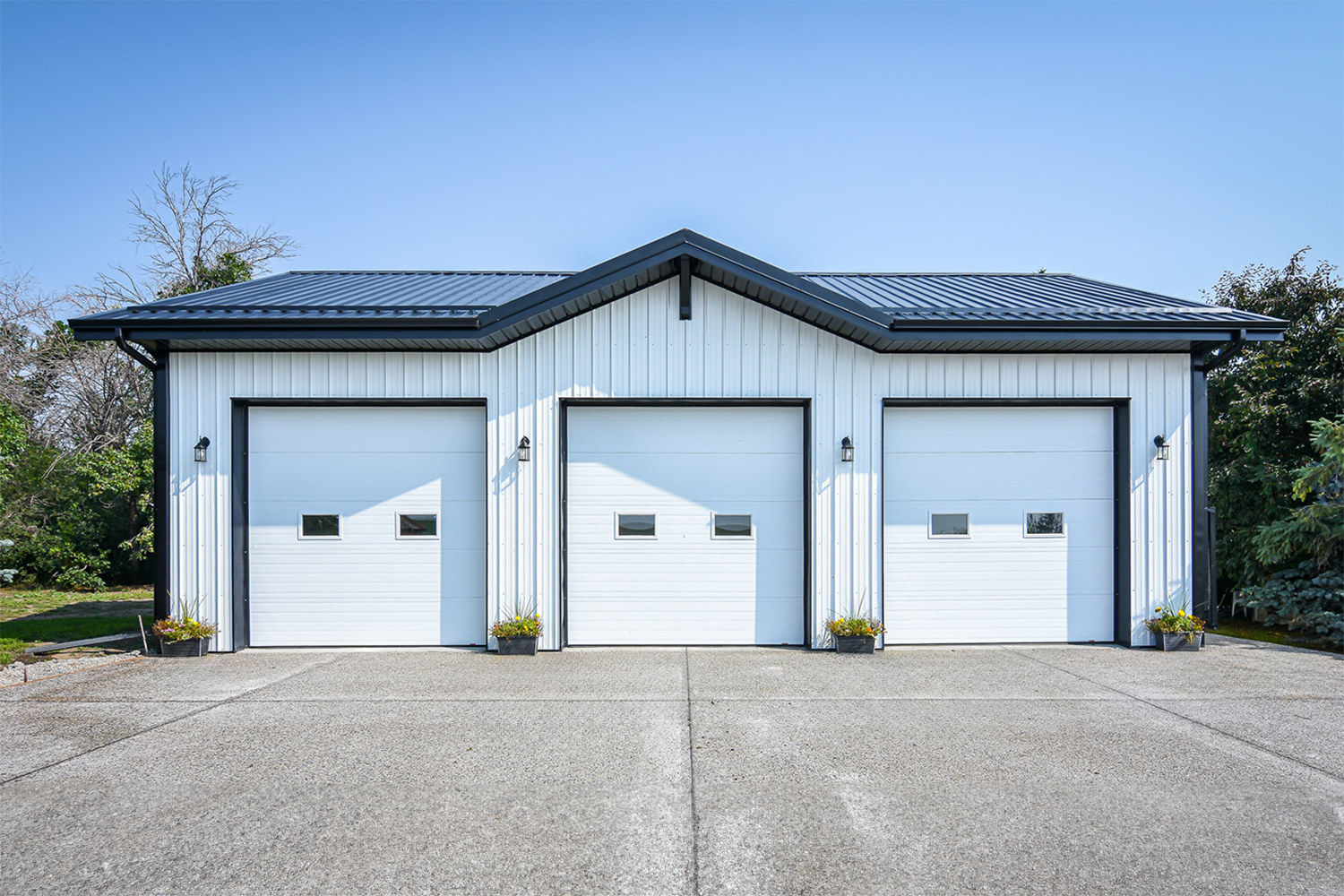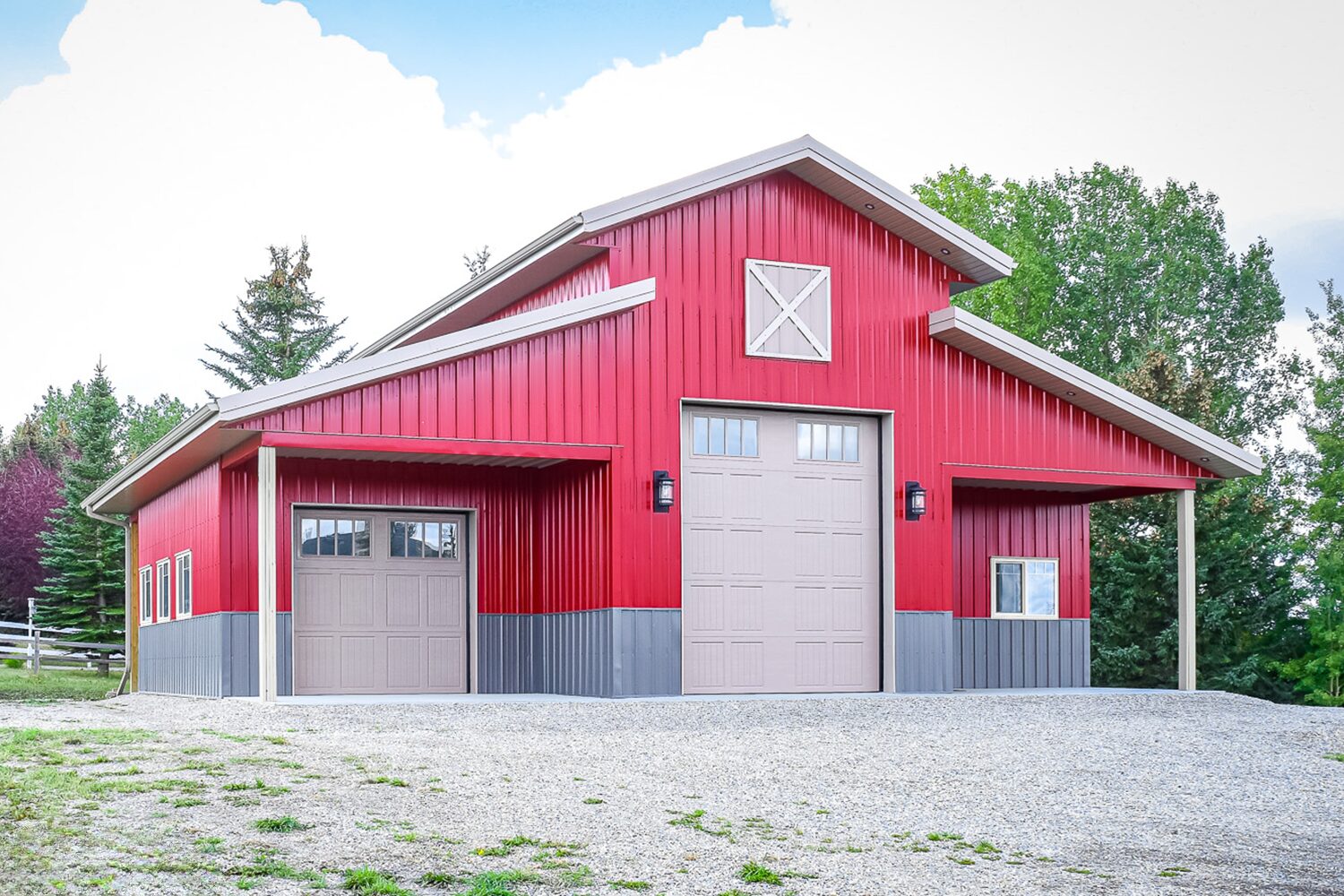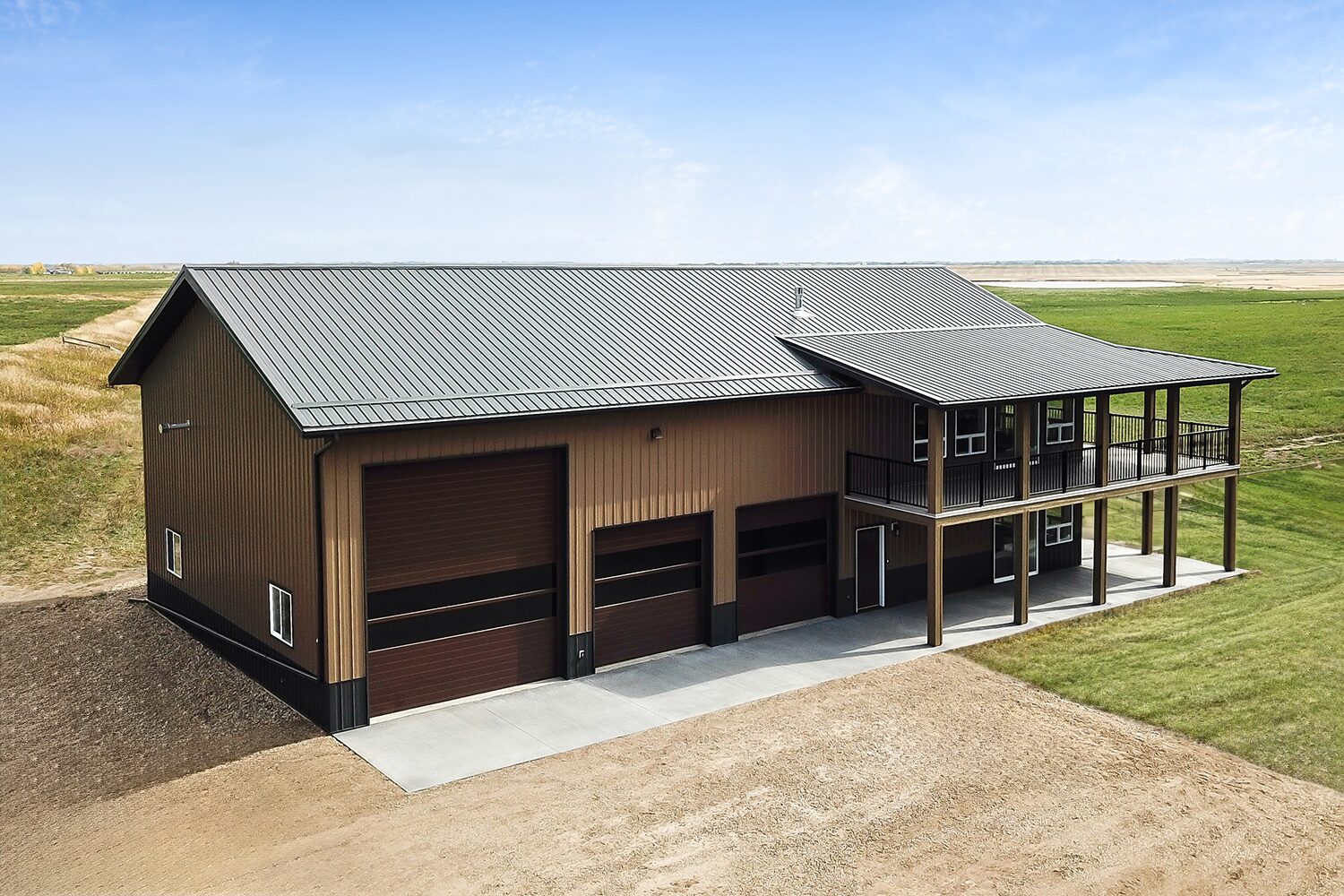Post frame buildings are one of the most efficient, cost-effective and durable construction methods available for rural building projects. Whether you’re planning a riding arena, barn, farm shop, storage building, commercial facility, or even a home, post frame construction offers unmatched versatility and functionality.
For rural property owners in the initial stages of their building planning, this article answers common questions about post frame buildings – from construction materials and timelines to costs and benefits. Use the information below to find answers to your post frame questions.
1. What Is Post Frame Construction?

Post frame construction is a method of building that does not have a traditional concrete foundation. Instead, large wooden posts are buried in the ground to form the structure of the building and provide enough strength and stability to support the weight of the roof system and withstand snow and wind loads.
Learn more about post frame construction
2. What Are the Advantages of Post Frame Construction?
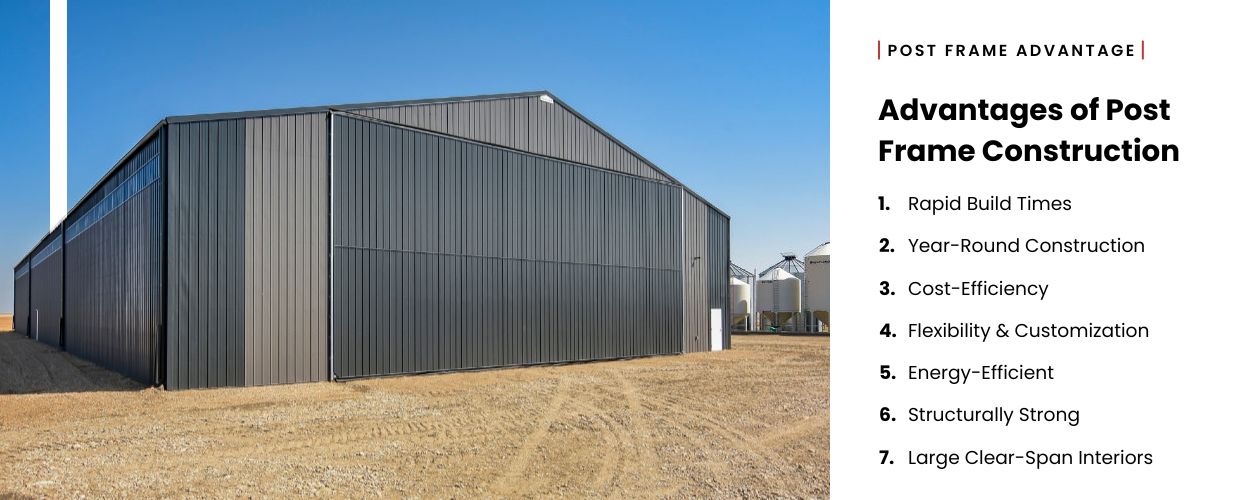
Compared to other construction methods, post frame buildings have several key advantages:
- Faster Build Times: Fewer building components and simplified foundations accelerate construction.
- Year-Round Construction: No traditional concrete foundation means construction can proceed all year.
- Cost-Efficiency: Reduced material and labour costs make post frame buildings more economical.
- Design Flexibility: Clear-span interiors and easily customizable designs accommodate a wide range of uses.
- Energy-Efficiency: Widely spaced posts allow more insulation to be placed inside the wall for a higher R-value. Large, open interiors are also more economical to heat and cool.
- Structural Strength: Laminated posts and engineered trusses distribute loads into the ground efficiently.
- Clear-Span Interiors: Large, open interiors free of load-bearing walls.
Gain a deeper understanding of post frame advantages
3. How Long Does It Take to Build a Post Frame Building?
Although construction times vary depending on the size and design complexity, general guidelines are:
- Simple structures, like a machine shed: 2-3 weeks
- Elaborate designs, like a custom horse barn: 4-8 weeks, or longer
4. What Is the Lifespan of a Post Frame Building?
How long a post frame building lasts depends on its design features, craftsmanship, and location. A properly built and well-designed post frame building can last for 50 years or more. To prolong the lifespan of your building:
- Select high-quality building materials
- Design the building specifically for your location and intended use
- Perform regular maintenance
- Select a builder with a reputation for craftsmanship and integrity
5. How Much Does a Post Frame Building Cost?
The cost of a post frame building can vary greatly depending on the design, materials, site conditions, and several other factors.
5. What Types of Buildings Use Post Frame Construction?
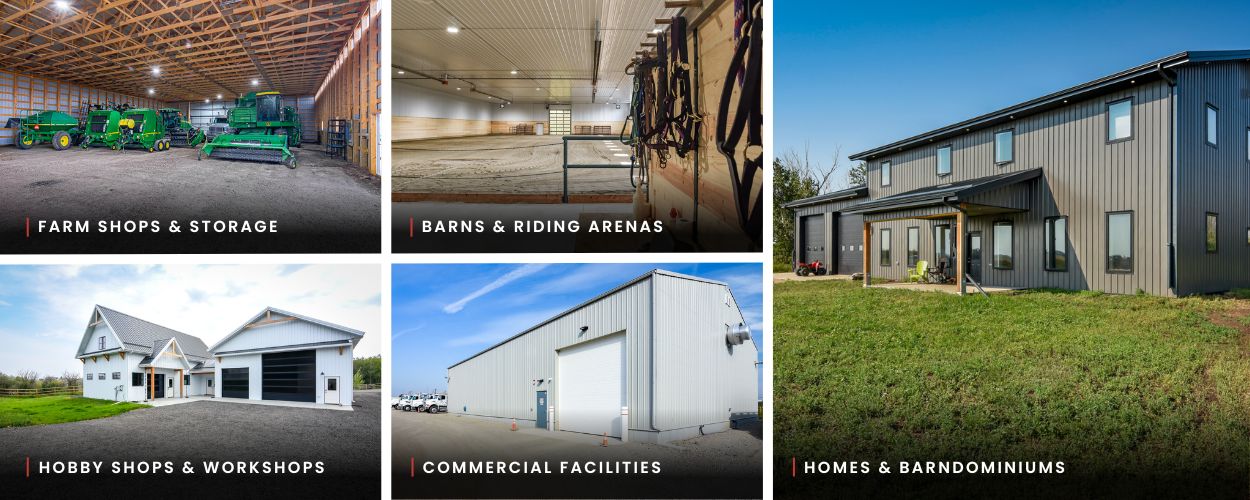
Post frame buildings are widely used in both rural and commercial settings. Common applications include:
- Farm Shops & Machine Sheds
- Livestock Shelters & Riding Arenas
- Hobby shops, Workshops & Garages
- Commercial Warehouses, Offices & Retail Facilities
- Airplane Hangars
- Post Frame Homes & Barndominiums
Explore post frame building types
6. What Materials Are Used in Post Frame Buildings?
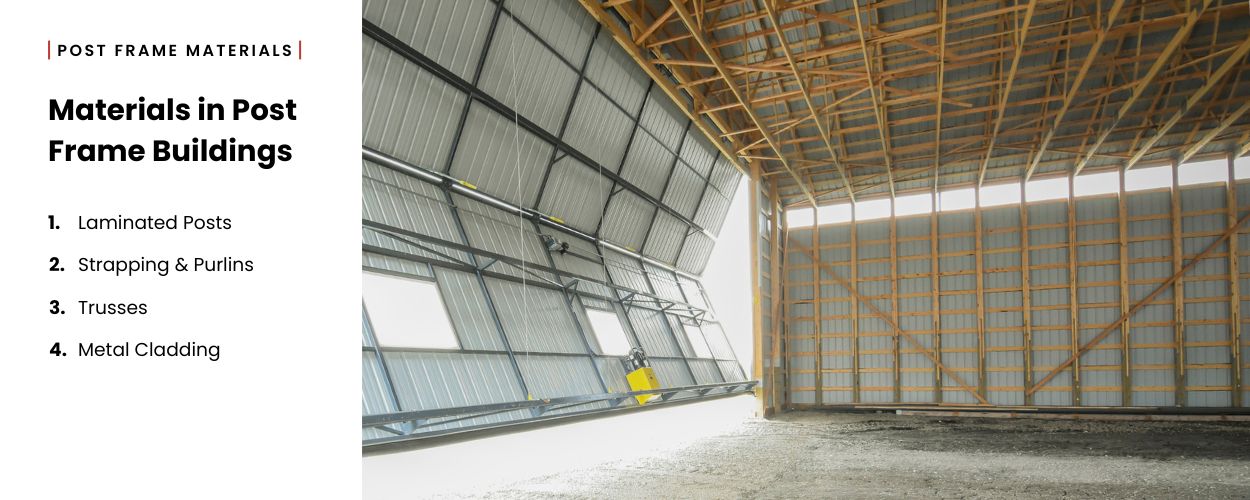
Post frame buildings require minimal materials, which include:
- Laminated Posts: Made of dimensional lumber, glued and pressed together
- Strapping & Purlins: Horizontal wooden members that connect posts and provide a place to fasten metal siding
- Engineered Wood Trusses: Wood trusses bear directly on the posts, secured with structural screws
- Metal Cladding: Securely fastened on the walls and roof
7. Do Post Frame Buildings Require a Foundation?
No, post frame buildings do not require a traditional poured concrete foundation. Instead, post and frame buildings derive strength and stability from being:
- Buried below grade on concrete footings, or
- Anchored above grade to pre-cast concrete or steel piers that are buried in the ground
8. Are Post Frame Buildings Energy Efficient?
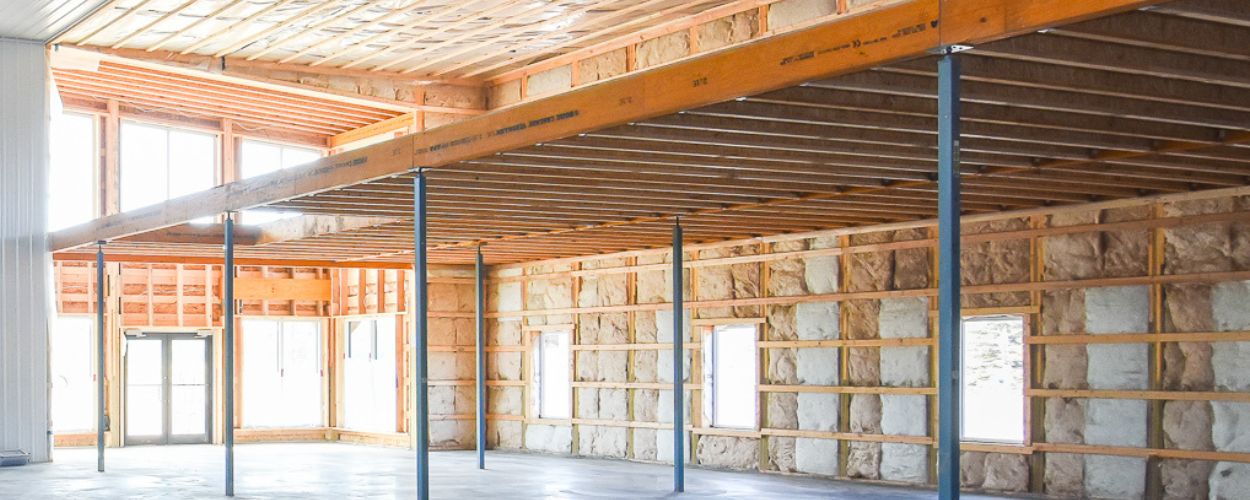
Yes. In post frame buildings, the wooden posts can be spaced further apart to create deeper and wider wall cavities for more insulation. The clear-span interiors are also more economical to heat and cool.
9. Can Post Frame Buildings Be Customized?
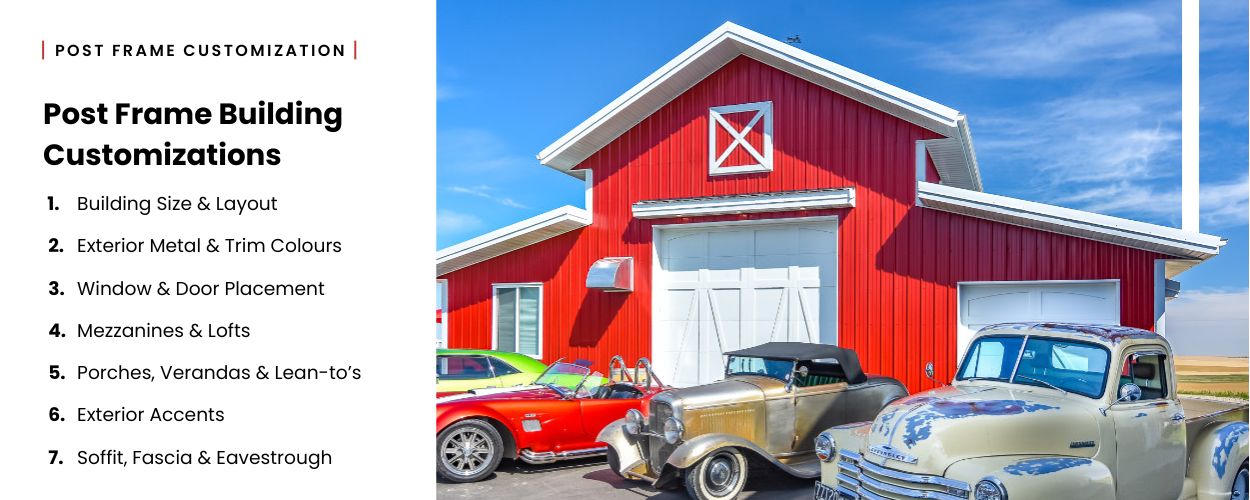
Absolutely. Post frame construction is ideal for customizing the functionality and appearance of agricultural, acreage, commercial, or residential builds. Customizable elements and optional features include:
- Building Size & Layout
- Exterior Metal & Trim Colours
- Window & Door Placement
- Mezzanines & Lofts
- Porches, Verandas & Lean-to’s
- Soffit, Fascia & Eavestrough
- Exterior Accents
Explore our gallery of custom post frame builds
10. Can Post Frame Buildings Be Expanded or Renovated in the Future?
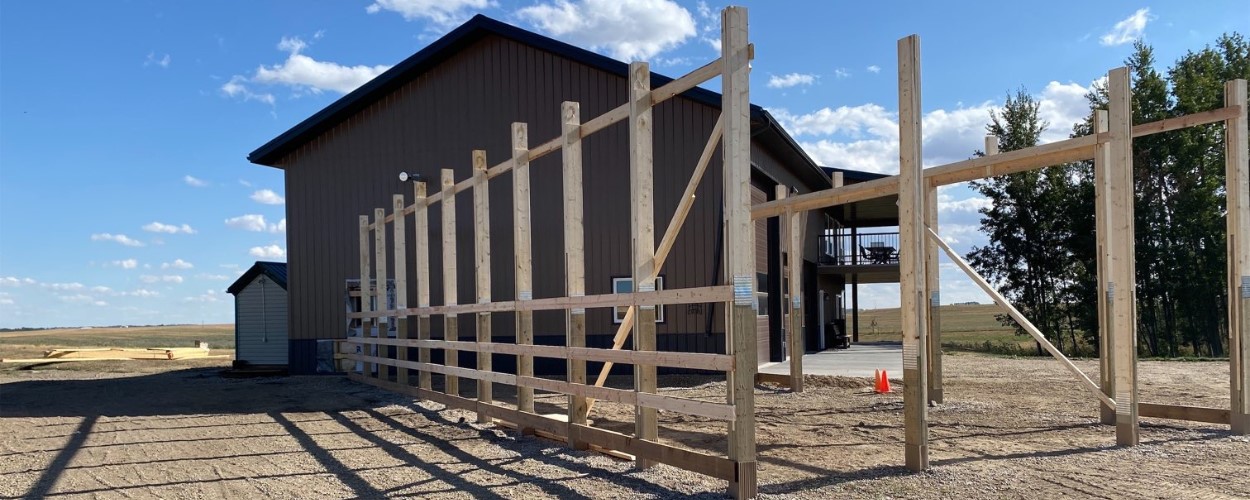
Yes, post frame buildings are easily renovated and can be expanded or retrofitted as your needs change.
Learn more about post frame renovations
11. Do Post Frame Buildings Require Permits?
To build a post frame building you will generally need two types of permits – a development permit and a building permit.
- Development Permit: For zoning and site compliance
- Building Permit: For construction code compliance
12. How Do I Choose the Right Location for My Post Frame Building?
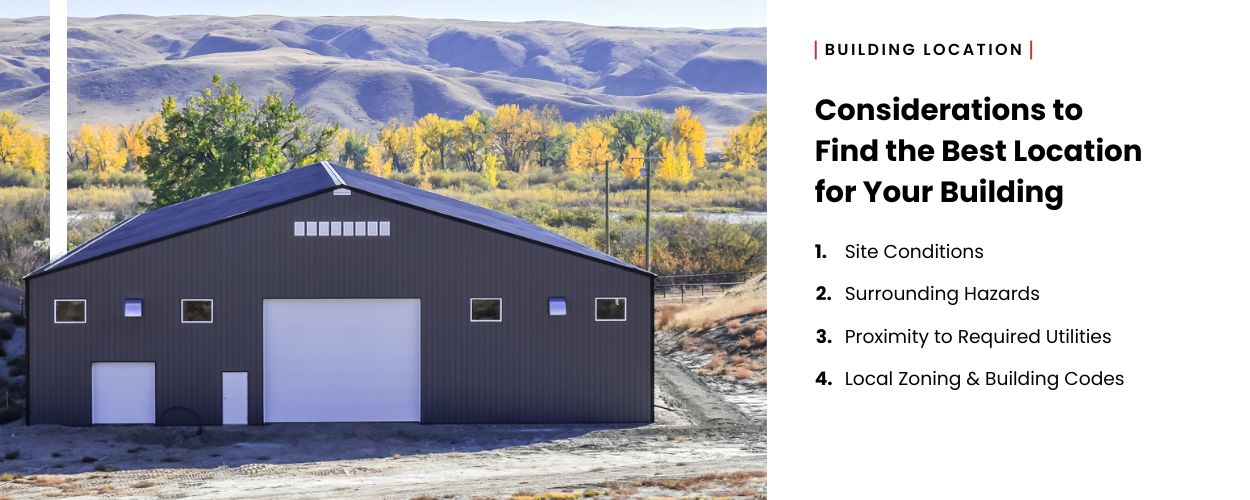
The ideal location for your building is determined by a combination of factors. To determine the perfect location to build, consider:
- Functionality: Site access & traffic flow
- Utility Access: Proximity to all required services
- Site Conditions: Drainage and grading
- Site Compliance: Setbacks and other regulations
Read our in-depth guide on choosing a perfect location for your post frame building
13. How Do I Choose the Right Size for My Post Frame Building?
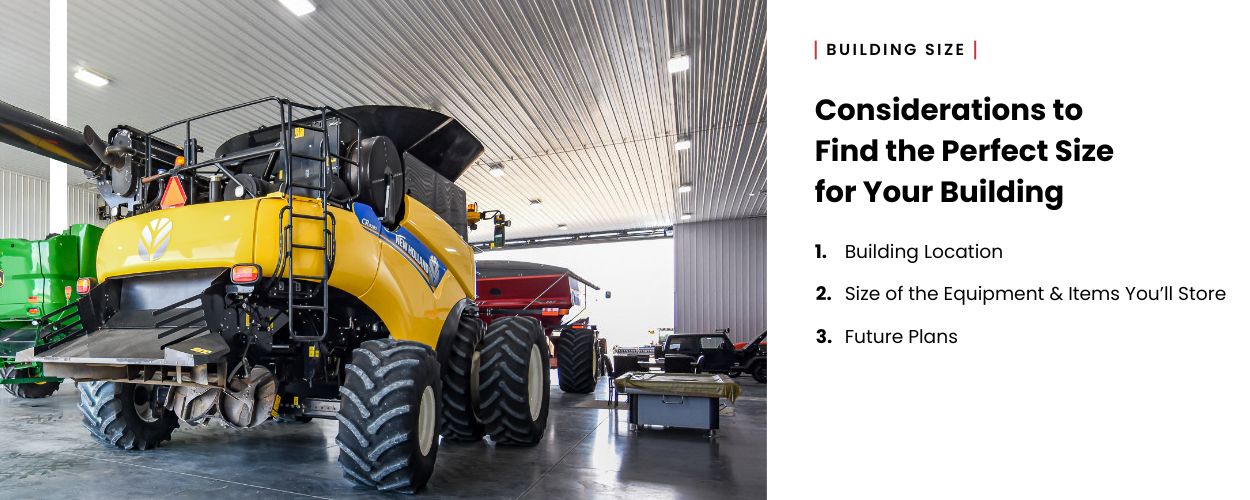
Determining the size for a post frame building is a process that involves considering:
- Equipment & Vehicle Dimensions: The height and width of vehicles and equipment to be stored inside inform the minimum building height, width, and square footage.
- Specific Use: For example, maintaining vehicles will require more room to work inside your building.
- Future Needs: Anticipating growth can ensure your building serves long-term needs.
- Location: Any restriction on the size or terrain of your property will influence how large your building can be.
14. Can Post Frame Buildings Be Constructed During Winter?
Yes. Since post frame buildings don’t have a traditional concrete foundation, they can be built year-round – even during cold Canadian winters.
15. Can Plumbing, HVAC, and Electrical Services Be Installed in Post Frame Buildings?
Services such as electricity, plumbing, and HVAC are commonly integrated in post frame buildings.
